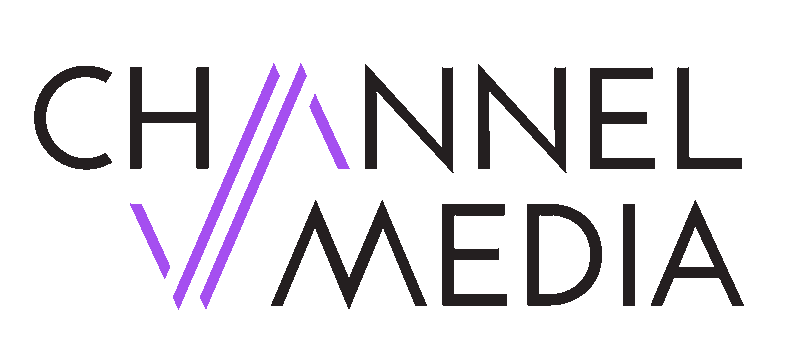SEO and public relations might seem like two separate marketing strategies, but they actually complement each other in some amazing ways. While SEO helps your website rank higher on search engines, PR builds brand credibility and secures coveted media coverage.
When combined, SEO and public relations are very effective at enhancing your online presence and driving organic traffic to your site. Let’s break down how each plays a role in growing your brand.
Understanding SEO and Public Relations
Search engine optimization and public relations are two of the most valuable assets for online visibility, because they keep your brand top of mind and at the top of search rankings.
The role of SEO in brand exposure
Think of SEO as a digital roadmap that helps your brand get noticed. By using the right keywords and delivering high-quality content, it becomes a lot easier for search engines (and people) to find you online. The better your SEO strategy, the higher your pages rank—which means more eyes on your site.
That said, SEO goes beyond algorithms and ranking first on Google. It’s really about creating engaging posts that resonate with your target audience and encourage repeat visits.
The importance of public relations in the digital age
Traditionally, PR campaigns have used press releases and news articles to share brand messaging or relevant updates. However, today’s PR professionals are more focused on building relationships and getting brands talked about on digital media outlets.
From social media initiatives to influencer partnerships, digital PR strategies are the gateway to reaching a wider, more diverse audience. Not only that, but well-executed PR efforts can also boost SEO by earning brand mentions and backlinks from high-authority websites.
Online Reputation Management through SEO
People trust what they see on search engines and social media, so keeping a positive online reputation is paramount. That’s where SEO efforts come in—helping you control the digital narrative and ensuring the best information ranks at the top of search results.
Monitoring and managing brand mentions
Simply put, you can’t manage your brand reputation if you don’t know what people are saying about you. That’s why it’s so important to track brand mentions across search engines, news sites, and social media platforms.
Tools like Google Alerts and Semrush make it easy to spot when and where your brand is mentioned online. By responding quickly and strategically to online comments—whether that’s expressing gratitude or addressing concerns—you demonstrate that your brand is transparent and trustworthy.
Strategies for enhancing online reputation
Improving your online reputation means shaping how people see your brand. Generating high-quality content, securing backlinks from credible sources, and accumulating good reviews can do wonders for your digital footprint.
Along with that, prioritizing guest blogs and expert interviews helps establish your authority and ensures you show up positively in search rankings. The goal is when people look for your brand online, they find content that genuinely represents your values and strengths.
Content Marketing and SEO: A Powerful Duo
Content marketing and SEO are the perfect pair for increasing online visibility. While SEO helps people discover your brand, high-quality content is what holds their interest and satisfies search engine criteria.
Crafting SEO-friendly content
Creating optimized content isn’t just about stuffing keywords. Instead, it’s about making sure your posts are easy to find and answer the right questions.
Start by researching terms your audience is searching for, and then weave them naturally into your titles, headings, and body text. But don’t forget about the user experience, too! Well-structured content (with clear calls to action) keeps your audience engaged and helps strengthen search rankings.
Types of content that enhance SEO and Public Relations
For better SEO, focus on blog posts, how-to guides, and case studies—all of which offer in-depth information that search engines love. On the other hand, press releases, interviews, and guest posts help with PR by getting your brand mentioned across the web and earning high-quality backlinks.
Having a range of content brings your digital marketing strategy into balance, and it also boosts your position on popular search engines.
SEO for Press Releases
Press releases can draw a lot of attention to your brand. When optimized correctly, they’re proven to increase web traffic and elevate search rankings.

Best practices for optimizing press releases
To make the most of your press releases, try incorporating these SEO-friendly tips:
- Use appropriate keywords: Start with thorough keyword research using tools like Google Keyword Planner, SEMrush, or Ahrefs. Focus on keywords that are relevant to your news, have reasonable search volume, and align with your target audience’s intent.
- Placement Matters: Incorporate keywords naturally into the headline, subheadings, and body text. Avoid over-optimization, as search engines penalize content that appears spammy. Aim for a keyword density of 1-2%.
- Latent Semantic Indexing (LSI): Use related terms and synonyms to help search engines understand the context of your content. For instance, if your keyword is “sustainable packaging,” include terms like “eco-friendly materials,” “biodegradable solutions,” or “green supply chain.”
- Write compelling, search-friendly headlines: Keep headlines clear so readers and search engines know what the press release is about. Keep headlines under 70 characters to ensure they display fully in search engine results pages.
- Include reputable links: Include links to relevant pages on your website, such as product pages, blog posts, or case studies. This not only boosts SEO but also guides readers to take desired actions.
- Optimize for readability: Use short paragraphs, bullet points and subheadings so the text is easy to scan.
- Pull in multimedia: Include high-quality images, videos or infographics that complement the text. For example, if you’re announcing a new product, include a demo video or an infographic highlighting its features.
- Alt Text and File Names: Optimize multimedia elements by adding descriptive alt text and using keyword-rich file names. This helps search engines understand the content of your visuals.
- Embedded Media: Host videos on platforms like YouTube or Vimeo and embed them in the press release. This can increase dwell time, which is a positive SEO signal.
By applying these SEO best practices, your press releases won’t just get published, but they’ll be seen by the right audience.
Case studies: Effective use of SEO in press releases
Search engine optimization can take press releases from basic announcements to influential digital marketing tools.
For instance, a tech startup might use keyword-rich press releases to land coverage in major publications and trigger website traffic. Similarly, local businesses can optimize their press releases using geo-targeted keywords. That way, their store is more likely to appear in local search results (and attract more customers).
Another example comes from ecommerce brands. Online retailers can use SEO in press releases to promote holiday deals or limited-time offers. This helps drive visitors to their site—and ultimately, increases sales.
Measuring the Impact of SEO and Public Relations Initiatives
Measuring the impact of SEO and public relations reveals what’s working and where you can improve. By tracking the right metrics, you can fine-tune your strategy for even better outcomes.
Key metrics for assessing brand exposure
To assess your brand’s exposure, you’ll need to keep tabs on a few KPIs:
- Website traffic: Tells you the number of unique visitors and where they’re coming from.
- Search engine rankings: Monitors how your brand ranks for key search terms.
- Backlinks and referral traffic: Tracks how many quality websites link to your content.
- Media mentions: Checks how often your brand appears in news articles, blogs, etc.
- Social media engagement: Analyzes shares, comments, and follower growth.
Together, these metrics indicate how well you’re reaching (and connecting with) your target audience.
Tools for tracking success
Fortunately, tracking these metrics doesn’t have to be complicated. You can lean on these tools to simplify the process:
- Google Analytics: Tracks website traffic, referral sources, and user behavior.
- Google Search Console: Monitors rankings, keyword performance, and website health.
- Semrush or Ahrefs: Insights on backlinks, keyword rankings, and competitor analysis.
- Brand24 or Mention: Records media mentions and brand sentiment across the web.
- Hootsuite or Sprout Social: Oversees social media engagement and audience growth.
All in all, these tools make tracking your success easier (and more accurate) than ever.
Final Thoughts and Future Considerations
Integrating SEO and public relations is the secret to online visibility and a positive brand reputation. By creating optimized content, earning media mentions, and tracking performance metrics, your brand can strengthen its digital presence and capture the top search results.
Prioritizing both SEO and Public Relations is the best way to guarantee long-term growth and keep your brand in front of the right audience.





